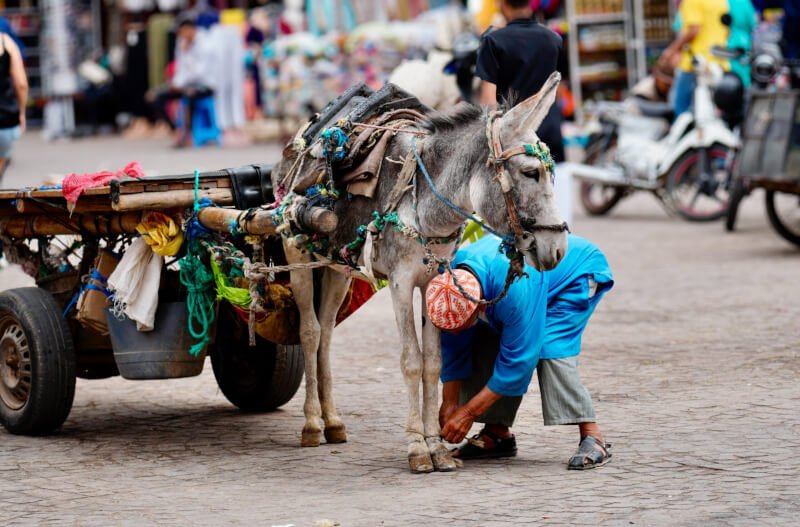In this article, you will discover the essential tips and guidelines on how to safely transport your reptile. Whether you are taking your scaly friend to the vet, moving to a new location, or simply going on a reptile adventure, it is crucial to ensure their comfort and well-being throughout the journey. From selecting the right carrier to maintaining proper temperature and providing a stress-free environment, we have got you covered with expert advice and practical techniques to make your reptile’s travel experience a smooth and safe one. So, read on to learn how to transport your reptile with confidence and peace of mind.

Choosing the Right Container
Transporting your reptile safely begins with choosing the right container. There are a few factors to consider when selecting a container for your reptile’s journey.
Size of the Container
First and foremost, it is important to choose a container that is appropriately sized for your reptile. The container should be large enough for your reptile to move around comfortably, but not so large that it can easily slide around during transportation. This will help prevent any injuries or stress to your reptile.
Material of the Container
When it comes to the material of the container, it is best to choose a sturdy and secure option. Plastic or glass containers with well-ventilated lids are often the most suitable choices for reptile transportation. These materials provide the necessary durability and security to ensure your reptile’s safety throughout the journey.
Security of the Container
Another crucial aspect to consider is the security of the container. Make sure that the container has a tightly-fitting lid to prevent any accidental escapes during transportation. Additionally, consider using a container with lockable features or secure clips for added peace of mind.
Preparing the Container
Preparing the container appropriately is essential to ensure your reptile remains comfortable and safe throughout the journey.
Cleaning and Disinfecting
Before placing your reptile in the container, it is important to thoroughly clean and disinfect it. Use a reptile-safe disinfectant to clean the container, removing any debris or residue that may pose a risk to your reptile’s health. This step is crucial in preventing the spread of any potential pathogens.
Adding Substrate
Adding an appropriate substrate to the container will help mimic your reptile’s natural environment and provide a comfortable surface for them to rest on during transportation. Research the specific substrate requirements for your reptile species and choose a suitable option. Remember to avoid substrates that could be harmful if accidentally ingested.
Providing Hiding Spots
Reptiles often seek hiding spots for security and comfort, even during transportation. Place suitable hiding spots such as caves or small branches in the container to provide your reptile with a sense of security. These hiding spots will help reduce stress and promote a feeling of safety throughout the journey.

Maintaining Temperature
Maintaining the proper temperature during transportation is vital for your reptile’s well-being. Reptiles are ectothermic, meaning they rely on external heat sources to regulate their body temperature.
Temperature Requirements
It is crucial to be aware of your reptile’s specific temperature requirements and ensure that they are maintained throughout the journey. Research the ideal temperature range for your reptile species and aim to keep the container within that range. Sudden temperature fluctuations or extremes can be extremely stressful or even fatal for reptiles.
Using Heat Packs or Heat Sources
When transporting reptiles in colder climates or during chilly seasons, it may be necessary to use external heat sources to maintain the appropriate temperature. Heat packs or heat pads designed for reptiles can be used to provide a consistent and safe heat source for your reptile. Place the heat source outside the container to prevent direct contact and always monitor the temperature closely.
Monitoring Temperature Throughout the Journey
During transportation, ensure that the container’s temperature remains consistent and within the appropriate range. Use a reliable thermometer to monitor the temperature regularly and make any necessary adjustments to maintain a comfortable environment for your reptile.
Ensuring Proper Ventilation
Proper ventilation is crucial to ensure your reptile has a steady supply of fresh air throughout the journey. Insufficient ventilation can lead to a buildup of carbon dioxide and inadequate oxygen levels, posing a significant risk to your reptile’s health.
Size and Placement of Ventilation Holes
When choosing or preparing a container, make sure it has appropriately sized ventilation holes to allow for proper airflow. These holes should be large enough to promote adequate ventilation but small enough to prevent your reptile from escaping. Place the ventilation holes strategically to ensure a constant flow of fresh air.
Using Breathable Materials
If you are using a material that does not naturally provide ventilation, such as plastic, consider using breathable materials or adding additional ventilation. Mesh or breathable fabric can be attached securely to the container, allowing for proper air circulation while keeping your reptile safely contained.
Avoiding Overexposure to Airflow
While proper ventilation is important, it is essential to strike a balance and avoid overexposure to airflow. Excessive air drafts can cause stress and discomfort to your reptile. Ensure that the ventilation holes or breathable materials are positioned in a way that directs the airflow evenly throughout the container without creating strong drafts.

Minimizing Stress
Transportation can be stressful for reptiles, so taking steps to minimize their stress levels is crucial for their well-being throughout the journey.
Keeping the Container Low and Stable
During transportation, it is important to keep the container low and stable. This will help prevent any excessive movement, which can cause stress and discomfort to your reptile. Avoid placing the container on high surfaces that may be prone to vibrations or sudden movements.
Reducing Noise and Movement
Reptiles are sensitive to noise and sudden movements, so it is essential to minimize these factors during transportation. Keep the container in a quiet and calm environment, away from loud noises or vibrations. Additionally, try to drive smoothly and avoid any sudden stops or sharp turns.
Providing Familiar Smells
Reptiles rely heavily on their sense of smell, and providing familiar scents can help reduce stress during transportation. Place a small item, such as a piece of cloth or bedding, with a familiar scent from their enclosure in the container. This will provide a sense of familiarity and comfort to your reptile.
Handling and Restraining
Proper handling and restraint techniques are essential to ensure the safety of both you and your reptile during transportation.
Using Proper Handling Techniques
When handling your reptile, it is vital to use proper techniques to minimize stress and avoid injuries. Different reptile species may require specific handling methods, so research and familiarize yourself with the appropriate techniques for your reptile. Always handle your reptile gently and support their body properly.
Avoiding Excessive Force
Reptiles are delicate creatures, and excessive force can lead to injuries or stress. Avoid applying excessive pressure, squeezing, or restraining your reptile too tightly. It is important to handle them with care and be mindful of their comfort throughout the transportation process.
Limiting Time of Handling
While handling your reptile is necessary during transportation, it is best to limit the time they are outside of their container. The stress levels can increase the longer the reptile is exposed to unfamiliar surroundings. Handle your reptile only when necessary and ensure they are securely placed back in their container as quickly as possible.
Planning the Route
When transporting your reptile, it is crucial to plan your route carefully to ensure a safe and comfortable journey.
Researching Reptile-friendly Stops
If your journey involves long distances, plan your route to include reptile-friendly stops along the way. Look for rest areas or pet-friendly accommodations where you can safely take your reptile out of the container for a brief period. These stops will allow your reptile to stretch their legs and provide them with opportunities for hydration and bathroom breaks.
Avoiding Extreme Temperatures
Extreme temperatures can be detrimental to your reptile’s health. Plan your route to avoid areas with excessively high or low temperatures that may pose a risk to your reptile’s well-being. Monitor weather forecasts and adjust your travel plans accordingly to keep your reptile comfortable throughout the journey.
Planning for Emergencies
Prepare for any unforeseen circumstances or emergencies that may arise during transportation. Carry a reptile first aid kit, which includes essential medical supplies, such as antiseptic solution, gauze, and tweezers. Have a list of emergency contact numbers, such as a reptile veterinarian, readily available to ensure quick and appropriate assistance in case of emergencies.
Securing the Container
Properly securing the container is crucial to prevent your reptile from escaping or becoming injured.
Properly Closing the Container
Ensure that the container is securely closed before you begin your journey. Double-check that the lid is tightly sealed and locked, if applicable. This step will prevent any accidental escapes and provide additional security during transportation.
Securing the Container in the Vehicle
During transportation, secure the container in a stable position inside the vehicle. Use appropriate restraints, such as seat belts or cargo straps, to prevent any movement or shifting of the container. This will minimize the risk of injuries to both your reptile and other passengers in the event of sudden stops or accidents.
Avoiding Exposure to Direct Sunlight
Direct sunlight can create excessively high temperatures inside the container, potentially endangering your reptile. Place the container in a shaded area of the vehicle, away from direct sunlight. This will help maintain a comfortable temperature and protect your reptile from the harmful effects of prolonged exposure to UV rays.
Documentation and Permits
Before transporting your reptile, it is important to ensure that you comply with any local and state laws and have the necessary permits in place.
Checking Local and State Laws
Research and familiarize yourself with any relevant local and state laws regarding the transportation of reptiles. Some reptile species may be protected, requiring specific permits or documentation for transportation. Verify that you comply with all legal requirements to avoid any legal complications during your journey.
Obtaining Necessary Permits
If required, obtain the necessary permits or documentation for transporting your reptile. Contact the appropriate authorities, such as your local wildlife department, to inquire about the specific permits needed for your reptile species. Make sure to obtain these permits well in advance to prevent any delays or issues during your transportation.
Preparing Relevant Documentation
Keep all relevant documentation, permits, and contact information readily available during the journey. This includes any paperwork required by law, such as permits or certificates of origin. Having these documents easily accessible will help expedite any potential inspections or inquiries during transportation.
Monitoring During Transportation
Throughout the journey, it is essential to monitor your reptile’s well-being and make any necessary adjustments to ensure their safety and comfort.
Frequent Checks on the Reptile
Regularly check on your reptile during transportation to monitor their behavior, temperature, and overall well-being. Look for any signs of stress, discomfort, or illness. If any concerns arise, make necessary adjustments, such as adjusting the temperature or providing extra humidity.
Monitoring Humidity Levels
Certain reptile species require specific humidity levels for optimal health. Monitor the humidity levels within the container and make adjustments as needed. Use a hygrometer to measure the humidity and provide a suitable environment for your reptile throughout the journey.
Ensuring Safety and Comfort
Above all, prioritize your reptile’s safety and comfort throughout the transportation process. Take note of any unusual behavior, such as excessive lethargy or aggression. If any concerns arise, make any necessary changes to the environment, such as adjusting temperature or ventilation, to ensure your reptile remains safe and comfortable.
By following these guidelines and taking the necessary precautions, you can safely transport your reptile to their destination, ensuring their well-being every step of the way. Remember to always prioritize the comfort, safety, and health of your reptile during transportation.

